Competition Showdown: Which Medical Drama is Leading in Key Audience Segments
When it comes to medical dramas, TV audiences are hooked. From Shonda Rhimes's long-time running tearjerker, Grey’s Anatomy, to new shows trying to find their path like NBC’s Heartbeat, medical dramas, if done right, have mass audience appeal. The storylines played out on these shows are rich and often involve life or death situations, romance, and of course, drama - it’s hard to turn away! It seems like today there is always a heart-pounding medical situation playing onscreen, but not all of TV’s current medical shows are created equal. NBC’s Heartbeat which premiered only a few weeks ago, received mainly negative reviews and has been labelled as “wannabe” of Fox’s House and Grey’s Anatomy. In 2008, House proved that medical dramas are a goldmine, when the show was named one of the most-watched television programs in the world. Since then, networks have tried and failed and have actually oversaturated the TV environment with medical dramas in hopes of landing the next smash hit. What Shows Do Niche Communities Care About?At Affinio, the marketing intelligence platform, we wanted to understand which shows (currently airing) are leading in key audience segments. By understanding where a show is resonating, or isn’t, networks can adjust their strategies to grow key audience segments and see how they stack up against their competitors. (Disclose: BrAve is an investor in Affinio)Using Affinio’s interest graph analysis, we analyzed five Twitter audiences of medical dramas combined (it looks like NBC is really gunning for a winner).Twitter Accounts Analyzed (155,378 unique users in the USA only):
- NBC’s Heartbeat
- ABC’s Grey’s Anatomy
- CBS’s Code Black
- NBC’s Chicago Med
- NBC’s The Night Shift
Affinio’s advanced interest graph algorithms are able analyze the connections that exist within a social audience and pinpoint differing audience segments based on the interests and passions of that segment. The result? The combined audiences of the selected medical drama Twitter accounts broke out into 12 interest-based communities as seen in the below audience visualization.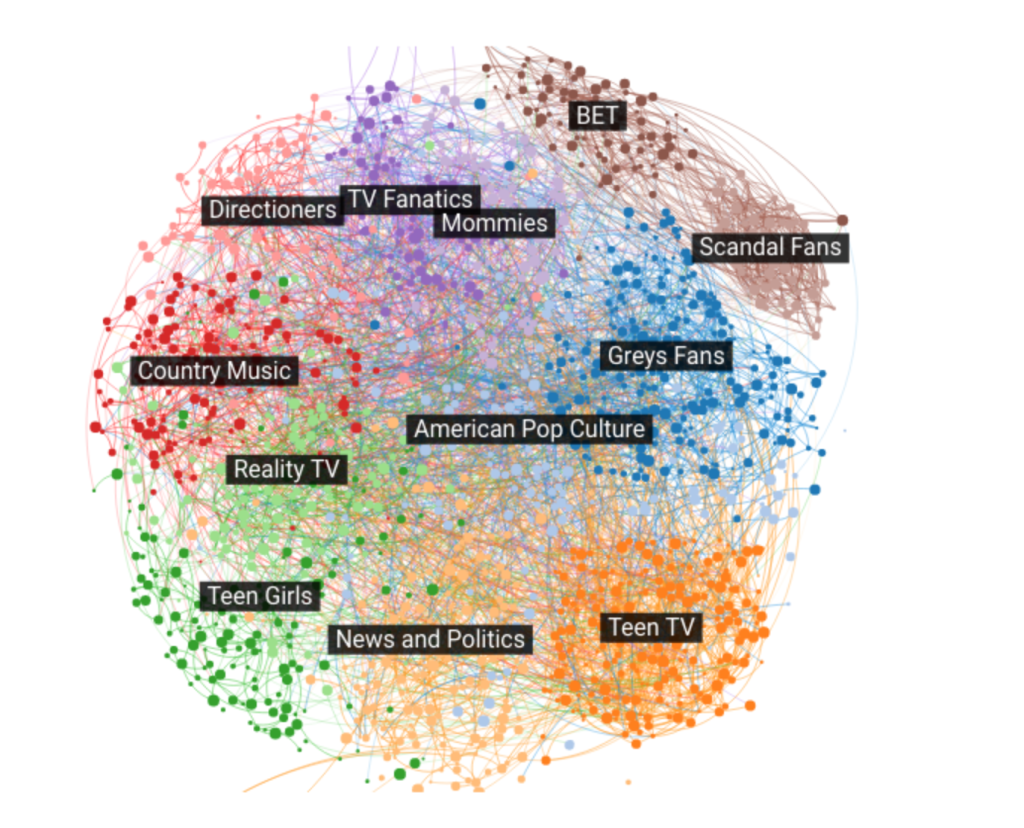 The Affinio platform has a “Competitive” feature that is accessible when an analysis is run on 2-12 Twitter accounts.The Competitive tab is then able to identify what share of audience each account has within a given community. The analysis takes into account the size disparities of the provided source handles, and adjusts the share percentages accordingly. This makes comparing very large accounts, like Grey’s Anatomy, and much smaller ones, like the new series Heartbeat, manageable.The Results Are IN!
The Affinio platform has a “Competitive” feature that is accessible when an analysis is run on 2-12 Twitter accounts.The Competitive tab is then able to identify what share of audience each account has within a given community. The analysis takes into account the size disparities of the provided source handles, and adjusts the share percentages accordingly. This makes comparing very large accounts, like Grey’s Anatomy, and much smaller ones, like the new series Heartbeat, manageable.The Results Are IN!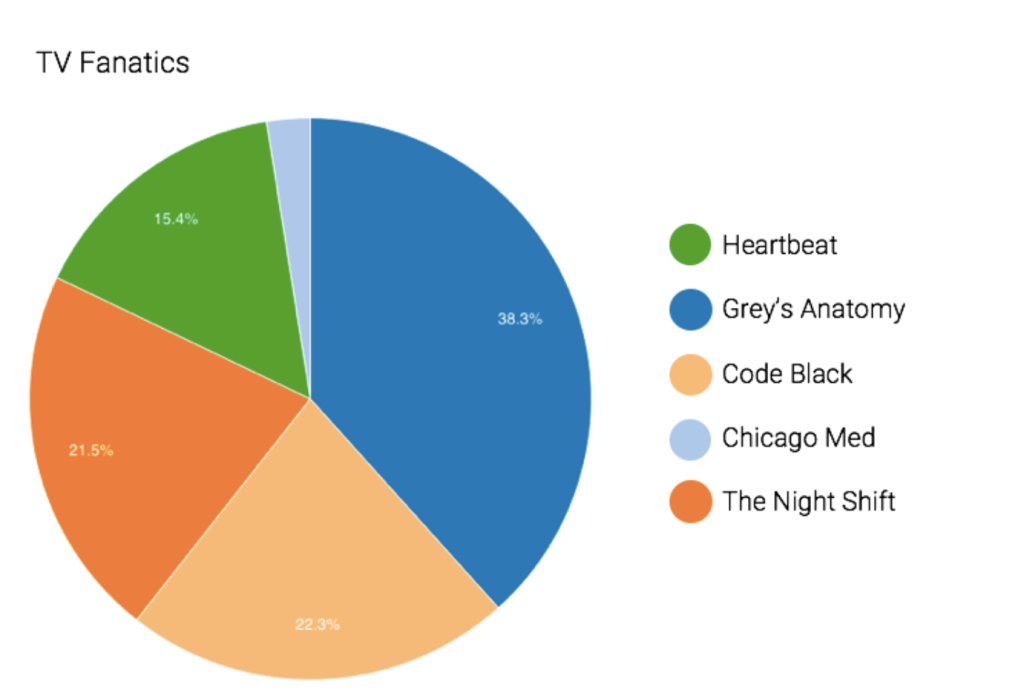 In this scenario we can see that Grey’s Anatomy has considerable share of the TV Fanatics audience, but newer shows like Code Black and The Night Shift aren’t far behind.
In this scenario we can see that Grey’s Anatomy has considerable share of the TV Fanatics audience, but newer shows like Code Black and The Night Shift aren’t far behind. 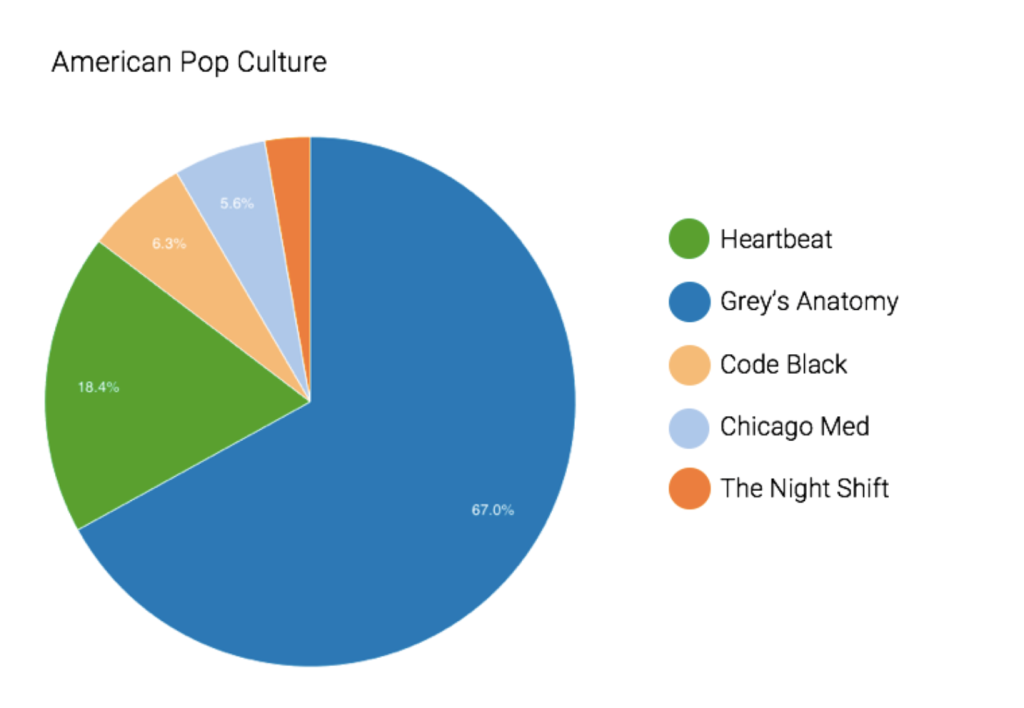 In this scenario it can be seen that Grey’s Anatomy represents over half of the “American Pop Culture” audience with no close competitors. We can assume this is due to the fact Grey’s has the longest tenure of the shows analyzed (the show premiered in 2005) and has established itself as a household name. Other shows, like Code Black, may want to try and capitalize on this share and look strategically at Grey’s strategy onscreen and off.
In this scenario it can be seen that Grey’s Anatomy represents over half of the “American Pop Culture” audience with no close competitors. We can assume this is due to the fact Grey’s has the longest tenure of the shows analyzed (the show premiered in 2005) and has established itself as a household name. Other shows, like Code Black, may want to try and capitalize on this share and look strategically at Grey’s strategy onscreen and off. 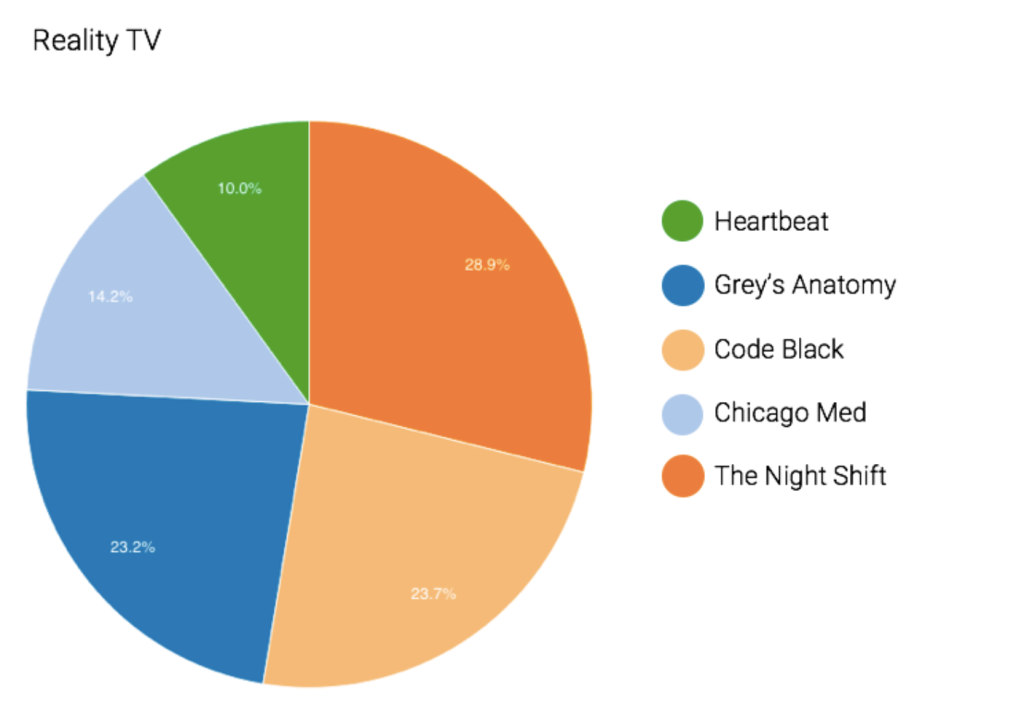 In this scenario it appears two of TV’s newest shows, The Night Shift and Code Black have struck a chord with reality television fans. Grey’s Anatomy and Chicago Med aren’t too far behind. However, NBC’s new show Heartbeat is struggling to resonate with this audience.
In this scenario it appears two of TV’s newest shows, The Night Shift and Code Black have struck a chord with reality television fans. Grey’s Anatomy and Chicago Med aren’t too far behind. However, NBC’s new show Heartbeat is struggling to resonate with this audience. 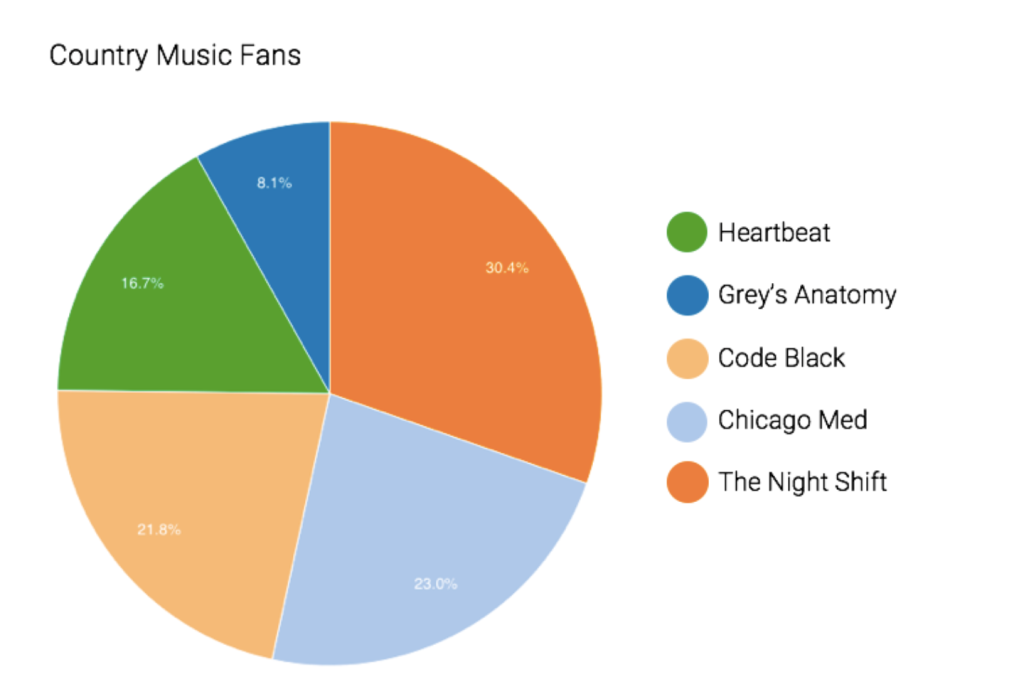 Who knew Country Music fans loved medical dramas so much? It turns out The Night Shift, which is based in San Antonio Texas, is the clear winner for this crowd. What Networks Can Learn About These Audiences:By leveraging the interest graph, networks are now able to understand a show’s viewers intimately and can therefore make better strategic decisions in order to reach them. By using data-backed initiatives, these TV medical dramas will be able to grow, cultivate, and better nurture their fan community or perhaps bring a heartbeat back to smaller, niche communities.Which TV medical drama do you think will survive?
Who knew Country Music fans loved medical dramas so much? It turns out The Night Shift, which is based in San Antonio Texas, is the clear winner for this crowd. What Networks Can Learn About These Audiences:By leveraging the interest graph, networks are now able to understand a show’s viewers intimately and can therefore make better strategic decisions in order to reach them. By using data-backed initiatives, these TV medical dramas will be able to grow, cultivate, and better nurture their fan community or perhaps bring a heartbeat back to smaller, niche communities.Which TV medical drama do you think will survive?

